USEFUL INFO - DANGEROUS GOODS SPECIFICATION
LABELS |
CLASS |
SUBSTANCES |
EXAMPLES/
UN No. |
|---|---|---|---|
 |
1.1 |
Substances & Articles which have a mass explosion hazard | UN 0076 Dinitrophenol 1.1D |
 |
1.2 |
Substances & Articles which have a projection hazard but not a mass explosion hazard. | UN 0328 Cartridges for weapons, inert projectile 1.2C |
 |
1.3 |
Substances & Articles which have a fire hazard and either a minor blast hazard or a minor projection hazard or both, but not a mass explosion hazard. | UN 0247 Ammunition, incendiary 1.3J |
 |
1.4 |
Substances & Articles which present no significant hazard. | UN 0337 Fireworks 1.4S (Pyrotechnic articles designed for entertainment) |
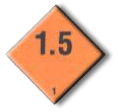 |
1.5 |
Very insensitive substances which have a mass explosion hazard. | UN 0482 Substances, explosive, very insensitive 1.5D |
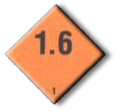 |
1.6 |
Extremely insensitive articles which do not have a mass explosion hazard. | UN 0486 Articles, explosive, extremely insensitive 1.6N |
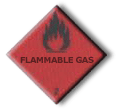 |
2.1 |
Flammable gases | UN 1001 Acetylene, dissolved Heating will cause a pressure rise with risk of bursting, explosion and fire. |
 |
2.2 |
Non-flammable, non-toxic gases |
UN 1066 Nitrogen, compressed Heating will cause a pressure rise with the risk of bursting. |
 |
2.3 |
Toxic gasses | UN1017 Chlorine Heating will cause a pressure rise with risk of bursting and toxic. |
 |
3.1 3.2 3.3 |
Flammable liquids, division into groups according to flashpoint from -18° to +61° C. | 3.1 1090 Acetone Flp. = .20°C 3.2 1294 Toluene Flp. = +7°C 3.3 1263 Paint Flp. = +32°C Risk of fire and explosion by escape from gases |
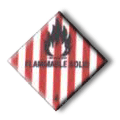 |
4.1 |
Flammable Solids | UN 1338 Phosphorus, Red risk of fire. |
 |
4.2 |
Spontaneously combustible | UN1384 Sodium Dithionite Risk of fire. React violently in contact with water |
 |
4.3 |
Dangerous when wet | UN1402 Calcium carbide. React violently in contact with water |
 |
5.1 |
Oxidizing substances | UN 1456 Calcium Permanganate. Substances promote combustion |
 |
5.2 | Organic peroxides | UN3106 Organic peroxide, Type D, solid Dibenzoyl Peroxide, Risk of explosion and fire ; protection for intensive warming, shock and friction. |
 |
6.1 | Toxic substances | UN1547 Aniline. Toxic if swallowed, by skin contact or by inhalation. |
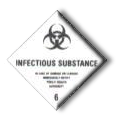 |
6.2 | Infectious substances | UN3291 Clinical waste, unspecified, high community risk are micro organisms that cause severe human or animal disease. |
 |
7 | Radioactive materials, cat. I |
UN2981 Uranyl Nitrate, solid Schedule 5 |
 |
7 | Radioactive materials, cat. II |
UN 2976 Thorium Nitrate, solid Schedule 6 |
 |
7 | Radioactive materials, cat. III |
UN2979 Uranium Metal, pyrophoric Schedule 10 |
 |
8 | Corrosives | UN 1779 Formic Acid. Contact with a relatively small quantity of water creates violent reaction and other dangerous substances |
 |
9 | Miscellaneous dangerous substances and articles | UN 2211 Polymeric Beads, expandable; Risk of fire. Inhalation of harmful substances. In risk of fire formation of extreme toxic or water pollutant. |
 |
Marine Pollutant , MP | Marine pollutants are regulated of the requirements by IMO. The marine pollutant mark should be placed adjacent of the dangerous goods label. | |
 |
Fumigation warning sign | Marking of units which are carried under fumigation. Warning signs are fitted on the container door. Do not enter this cargo unit. |